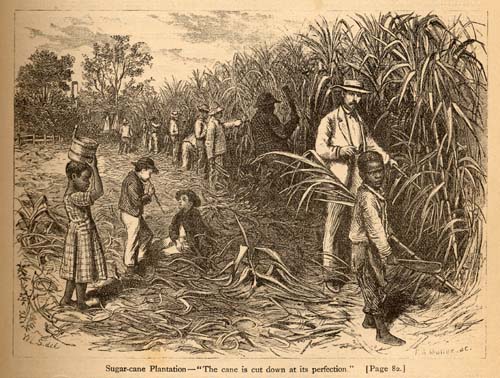“If all the miseries and troublesome affaires of this
sorrowful voyage should be perfectly and thoroughly written, there should need
a painful man with his pen, and as great a time as he had that wrote the Hues
and deaths of the martyrs. “
~ John Hawkins.
On March 27, 1568 Hawkins and
his men reached the Spanish territory of Dominica. They had a very hard time
trading slaves, since the King banned any trade with the English. This of
course did not stop Hawkins and Francis Drake. In Rio de la Hache, they entered
a town by force and “by friendship of the treasurer, [they] obtained a secret
trade; where upon the Spaniards resorted us by nigh, and bought of us to the
number of 200 Negros” (Hawkins 73). Hawkins was believed to have had a secret Asiento, which literally means “Negros contract” and is an agreement between
the Spanish crown and an individual to deliver slaves to Spanish colonies.
In August of the same year,
Hawkins and his men were caught up in a huge storm off the coast of Florida.
The six ships were severely damaged, so Hawkins took shelter in Port St. John
de Ullua. They stayed there for a month with permission from the Viceroy, Don
Martin Enriquez. During a dinner, the Viceroy and his Spanish fleet ambushed
Hawkins. In Hawkins own account, he writes, “Now when the Jesus and the Minion
were gotten aboard two ships, length from the Spanish fleet, the fight began
hot of all sides” (Hawkins 78). Most of his ships were destroyed, and his men
barely escaped on the Minion. Hawkins and
his men were almost out of food and supplies. When they landed on an Island in
hope of finding food and water, half of his men stayed on the Island out of
desperation, while Hawkins and the rest sailed home. It is said that many of
the men suffered greatly from the Inquisition of Mexico, or were even sold as
slaves.
After this third and
unfortunate journey, England and Spain had unstable relations. In 1588, Hawkins
fought the Spanish again, and was knighted for his leadership. During the
1560’s Queen Elizabeth and the Spanish King’s relations were beginning to
deteriorate due to religious differences. King Philip II’s act to suppress the
Protestant movement ended up starting a rebellion in the Netherlands. Queen
Elizabeth meanwhile, reinstated the Act of Royal Supremacy, which took out any
papal authority. Hawkins and Drake were also a leading cause of War. They, with
the support of the Queen, wanted to break the Spanish monopoly on the Atlantic
Slave Trade. The English do eventually break the Spanish monopoly, but not
until the late 17th century. In 1585, Elizabeth I signed a treaty
with the Dutch, to help them rebel against the Spanish rule, thus beginning the
Anglo-Spanish War.
Morgan, H. (2006,
September 1). Teaching the Armada: An introduction to the Anglo-Spanish War,
1585-1604. History Ireland.
HAWKINS' THIRD
SLAVERY VOYAGE. (n.d.). Retrieved November 20, 2015
C N Trueman
"Sir John Hawkins"
historylearningsite.co.uk.
The History Learning Site, 17 Mar 2015. 19 Nov 2015.
Markham, C.,
& Hawkins, J. (1878). The Hawkins' voyages during the reigns of Henry
VIII, Queen Elizabeth, and James I. England: Hakluyt Society.
http://www.slavevoyages.org
SLO # 8,9,&10



